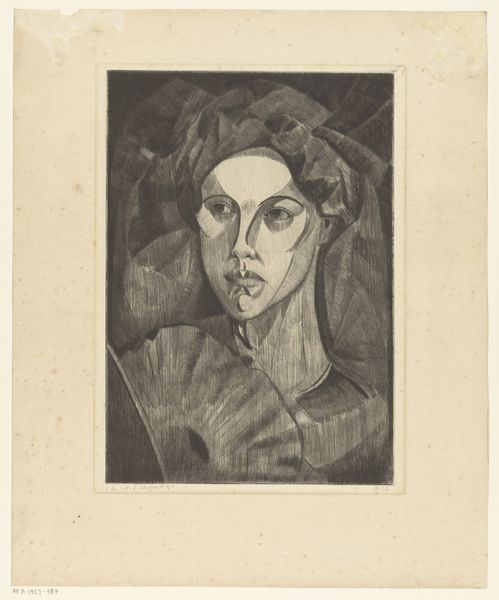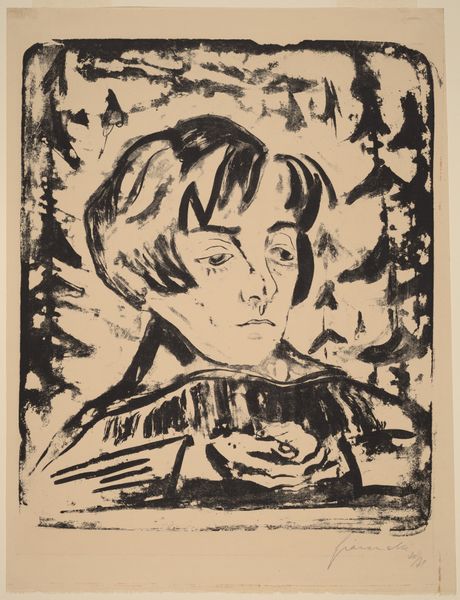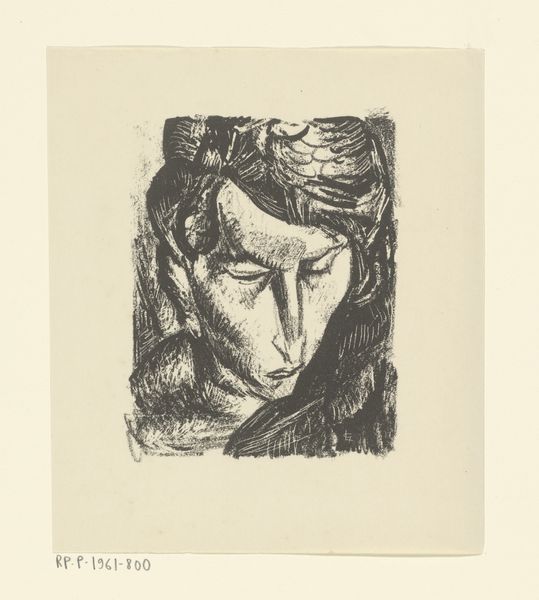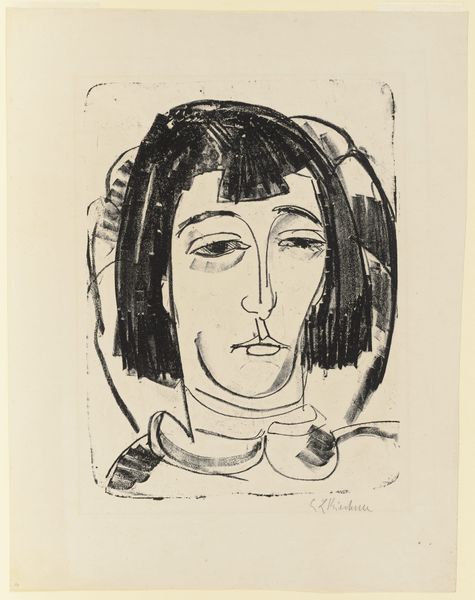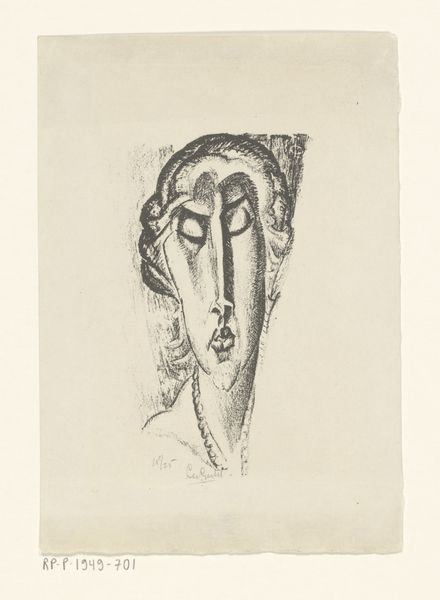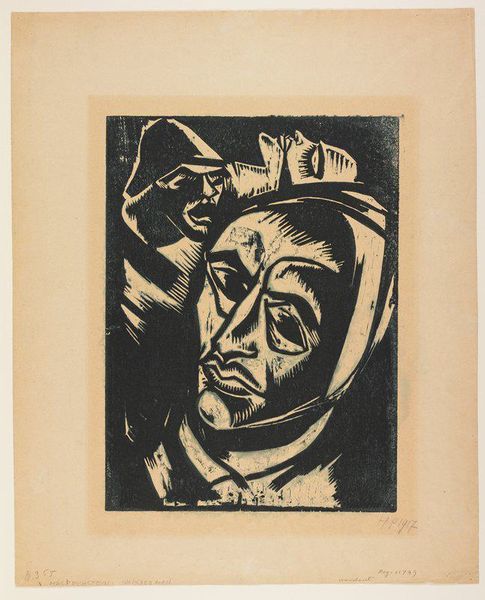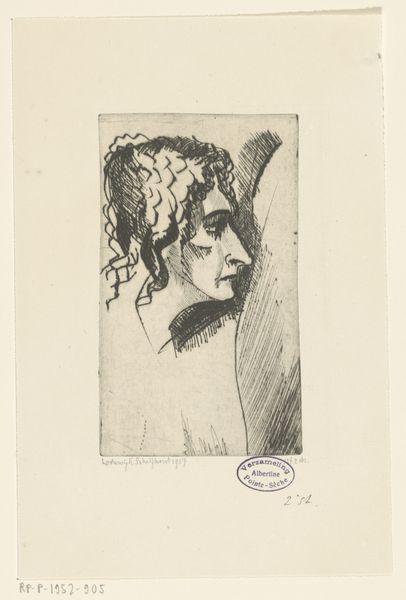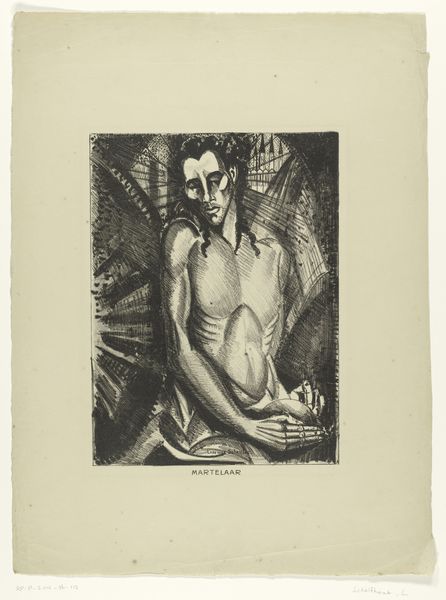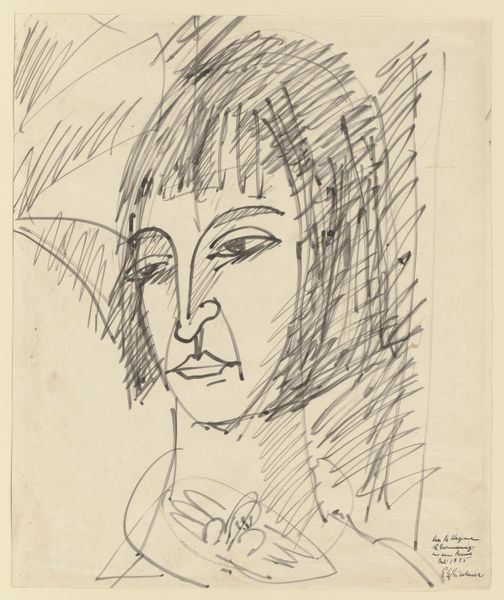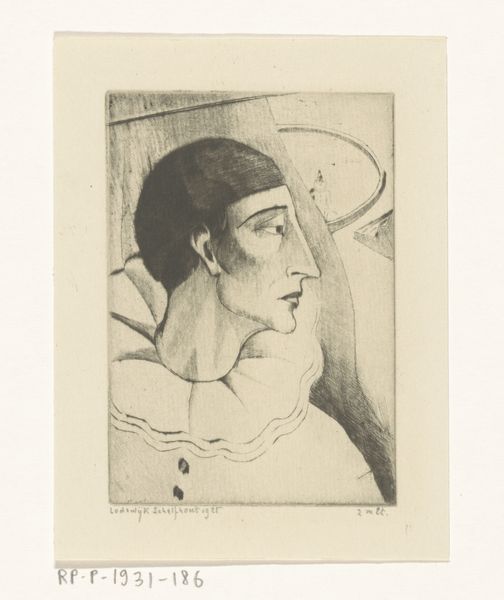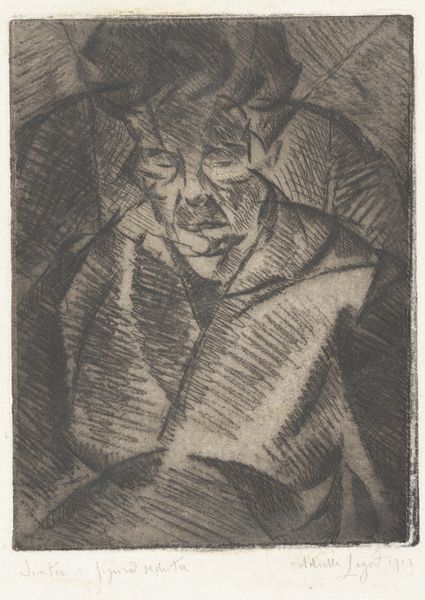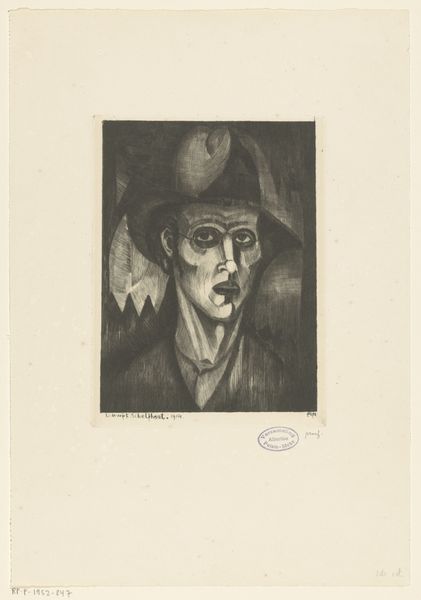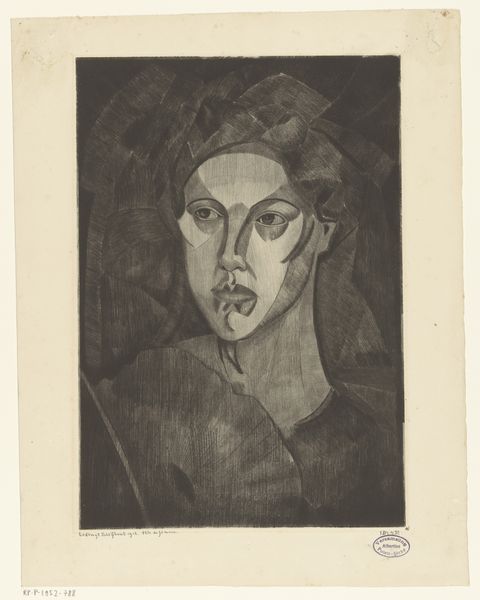
drawing, gouache, woodcut
#
portrait
#
drawing
#
gouache
#
german-expressionism
#
expressionism
#
woodcut
Copyright: Public Domain
Editor: Here we have Ernst Ludwig Kirchner’s "Head of Erna" from 1912, a striking woodcut currently residing at the Städel Museum. It's a very graphic portrait and it makes me wonder about the relationship between artist and model. How do you read this piece? Curator: I find it fascinating to consider the labor involved. The act of carving into wood—the physical exertion and the precise control needed to translate Kirchner’s vision into this tangible form. Notice how the harsh cuts of the woodblock emphasize the subject's angular features. Think about the societal context. The *Die Brücke* artists aimed to challenge bourgeois norms through both subject matter and method. Editor: So the medium itself, woodcut, already makes a statement? Curator: Precisely. It elevated what might be seen as a "craft" to the level of high art. How the very process and material, typically outside the realm of traditional painting or sculpture, becomes central. Consider how readily available wood was in Germany at that time and also consider how German Expressionism saw itself as being 'of the people'. It wasn’t marble, like a sculpture intended for a wealthy patron; it was an artwork, made from readily available, relatively inexpensive materials, accessible to a wider audience. Editor: I never really thought about the availability of materials influencing artistic movements that way. It makes the portrait feel even more connected to a particular time and place. Curator: Absolutely! The roughness challenges expectations. Where smooth, detailed carving might suggest elegance, Kirchner goes the other way. The bold, crude carving reinforces the Expressionist goals to present reality as emotionally heightened. And consider what "Erna" represents at the time, who was she and who would consume images of her? Editor: I’ll definitely look at prints differently now. I always thought the message was just *in* the image, not so much in *how* the image was made. Curator: It's a valuable lesson in art history. It demonstrates the power of the material to convey meaning.
Comments
stadelmuseum about 2 years ago
⋮
By way of printmaking, Kirchner found new forms. His pictorial language in the woodcut medium ranged from emphatic simplification to the highest degree of differentiation. Clearly outlined zones as well as precise lines and short parallel hatching form the head of Erna Schilling (1884–1945). The artist executed the woodcut in 1912, the year he met his model, who would be become his lifelong partner. This brush-coloured copy from the Crespo bequest is the only known copy.
Join the conversation
Join millions of artists and users on Artera today and experience the ultimate creative platform.
